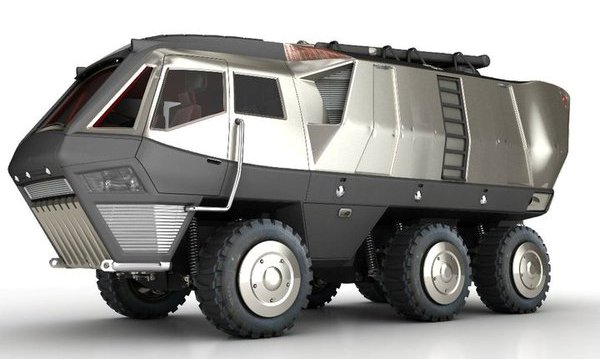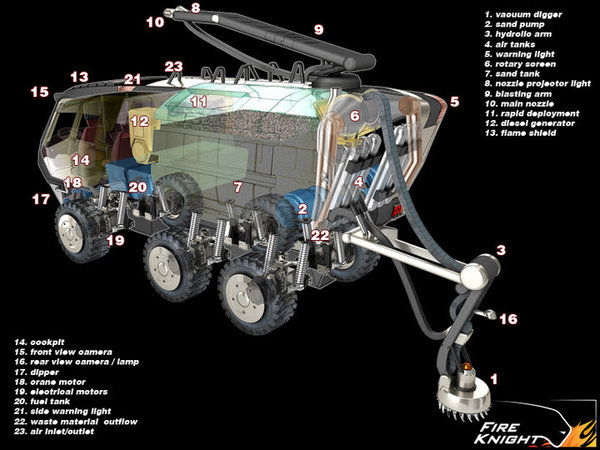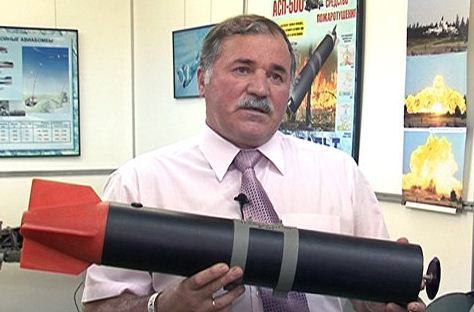
This may be another invention to add to the list of Lame-Ass Ideas, but we’ll withhold judgement until more details are revealed.
From what we can gather from the diagrams, it appears that this vehicle is designed to spray sand at a forest fire. Yes, sand. The diagram includes interesting items such as: sand pump, sand tank, blasting arm, and a vacuum digger.

Other than the sketches, we can find only this description:
AT4FV All Terrain Field-Forest Fire Fighting Vehicle
Fireknight is inspired with hope for future by aiming extinguishing a fire without water. With this important fire extinguisher, Fire Knight, Dr. Hakan Gursu and his team has been deemed worthy of.
It won 2nd place in the “Sustainable Living/Environment Preservation – Rural Sustainable Design category in IDA 09 Competition”, and honorable Mention from “Green Dot Awards 2008, Concept Category”, whatever those are.
It may not meet “light hand on the land” guidelines with the “vacuum digger” and the sand blasting system, if that’s what it is.
It’s great when designers think outside the box when it comes to firefighting equipment. Remember the “Fire Reconnaissance Vehicle”? Not all of the ideas are going to be winners, especially if firefighters are not consulted, but over the last 100 years there have not been a lot of major advances in tools that a wildland firefighter can use. We’re still controlling fires by swinging sharpened pieces of metal attached to the ends of sticks.
UPDATE March 28, 2011:
After careful consideration, we have assigned this concept to the Lame-Ass Idea category. There is no written description that we can find, but it appears that the “vacuum-digger” rotates, loosens, and then vacuums up “sand”, dirt and no doubt vegetative matter, and deposits it in the “sand tank”. Then it is shot out the “blasting arm” toward the fire along with a lot of air. The air would fan the fire while the sand, dirt, and vegetative matter would, at best, cover some of the fire, slowing, but not putting out the combustion. At worst, the “blasting” would blow the fire all over hell while adding fuel to the fire.
Thanks J






